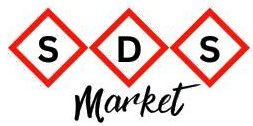Revised CLP Regulation: Key Updates and What Companies Need to Do
Revised CLP Regulation: Key Updates and What Companies Need to Do
The updated Classification, Labelling, and Packaging (CLP) regulation has officially entered into force as of December 10, 2024. Designed to enhance the identification and classification of hazardous chemicals, this update is a significant step towards better communication on chemical hazards. The European Chemicals Agency (ECHA) is calling on companies to review their substance portfolios and update their classifications accordingly.
What’s New in the CLP Regulation?
The revised CLP regulation introduces critical changes that every company handling chemicals should be aware of. Here are the main updates:
Classification of Mixtures:
Improved clarity for classifying mixtures and substances with multiple constituents.
Harmonised Classification and Grouping:
Emphasises grouping similar substances for harmonised classification.
Enhanced Labelling Rules:
Includes provisions for clearer hazardous chemical labelling, including digital labels.
Inventory Information Updates:
Adjustments to the data submitted and published in the Classification and Labelling Inventory.
Refill Stations:
New rules for selling chemicals at refill stations.
Role of Distributors:
Distributors now have clearer responsibilities as potential duty holders for poison centre notifications.
New Hazard Classes:
Hazard classes introduced last year for endocrine disruptors, persistent and bioaccumulative substances, and other high-concern categories are now fully incorporated.
Why This Matters
These updates aim to:
Provide consistency in hazardous chemical classification across the EU.
Enhance the safety of chemicals for users and the environment.
Simplify compliance processes for companies.
Steps Companies Should Take
To align with the revised regulation, companies should:
Review and Update Portfolios: Assess existing classifications and ensure compliance with the new hazard classes.
Submit Updates: Inform ECHA of new classifications via REACH registration dossiers or CLP notifications.
Stay Informed: Utilize ECHA’s resources, including:
Guidance on classifying specific hazardous substances (e.g., endocrine disruptors, PBTs, vPvBs).
Enforcement guidance for mixture classification.
A webinar covering the new CLP hazard classes.
Looking Ahead
Upcoming Guidance in 2025 ECHA plans to release additional guidance in 2025 to further assist companies. These will include:
Labelling guidance.
Annex VIII (poison centres) guidance.
A practical guide on read-across and grouping under CLH.
Stakeholder workshops on new hazard classes.
The updated CLP regulation is a pivotal development in chemical safety and compliance. Companies must act promptly to meet their obligations, leveraging ECHA’s resources for a smooth transition. By aligning with these changes, businesses contribute to a safer and more sustainable environment while maintaining regulatory compliance.

